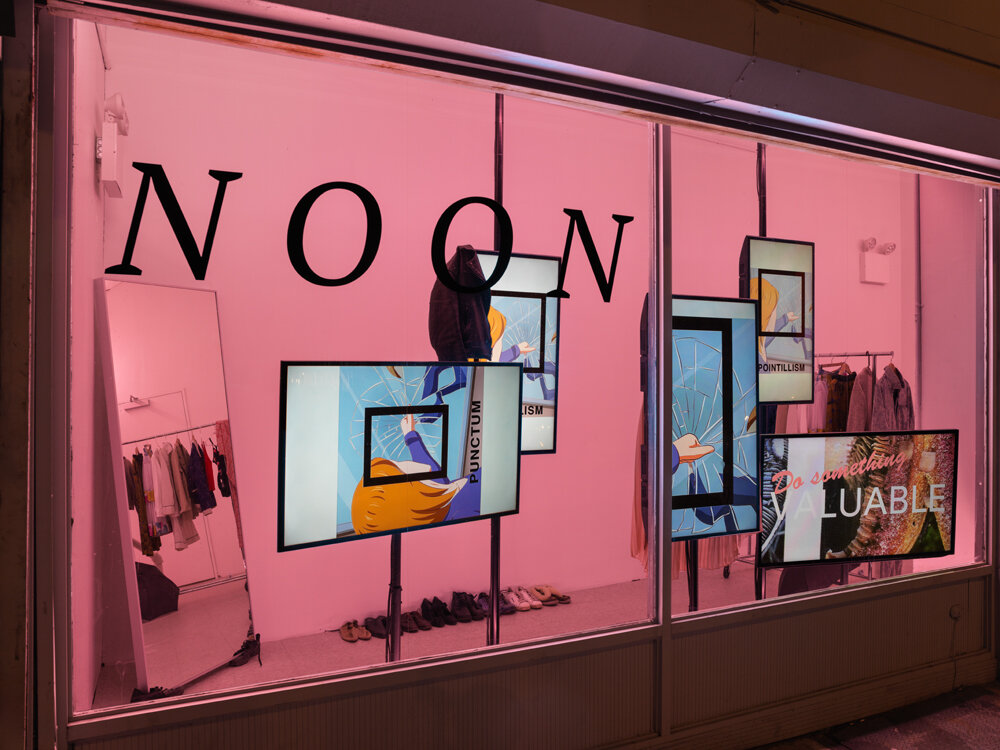The Kitchen L.A.B.: Regeneration Continues
By Alison Burstein, Curator, Media & Engagement
By virtue of its yearlong format, The Kitchen’s L.A.B. series creates opportunities for sustained, collective thinking around a single term of importance to art in dialogue with broader culture. Across these monthly events, we iteratively consider how shifts in our language are necessary for our grappling with a changing social landscape. This year, we are taking up the word “regeneration” in discussions with a range of artists and practitioners. The first gathering of the season took place in September with musician and curator Taja Cheek, writer and scholar Catherine Damman, and artist and writer Constance DeJong; the second program in November brought together musicians Chris Eddleton and Avram Fefer, poet Rachel Eliza Griffiths, and artist Sara Magenheimer.
Each of these L.A.B. events uncovered different dimensions of the term as it resonates today: while the first focused in part on regeneration as it relates to the work of effecting change culturally (as recounted in a previous post), the second largely revolved around the role of regeneration in the artistic process. Eddleton, Fefer, Griffiths, and Magenheimer exchanged thoughts on the cyclical nature of making and presenting work—the manner in which periods of activity give way to moments of reflection (and vice versa). From this conversation, there emerged a shared recognition of the potential for regeneration within this cycle, as when an existing work takes on new aspects as a result of a presentation context; or when an artist experiences something in the course of everyday life that prompts them to revisit or re-work a theme. The speakers acknowledged that the intensity and pressures of current cultural conditions demand different modes of working, but of fundamental importance is a commitment to maintaining a consistent practice.
The L.A.B. series continues on Tuesday, December 3 with a discussion among artist Andrea Geyer, writer and AIDS historian Sarah Schulman, and artist James Allister Sprang. In advance of the program, the participants have selected passages of text (featured below) that shed light on how they are thinking about the subject of the L.A.B.
Selected by Andrea Geyer:
To go back to something I said that remembering was the only repetition, also that remembering was the only confusion. And I think you begin to see what I meant by that.
No matter how complicated anything is, if it is not mixed up with remembering there is no confusion, but and that is the trouble with a great many so called intelligent people, they mix up remembering with talking and listening, and as result they have theories about anything but as remembering is repetition and confusion, and being existing that is listening and talking is action and not repetition, intelligent people although they talk as if they knew something are really confusing, because they are so to speak keeping two times going at once, the repetition time of remembering and the actual time of talking but, and as they are rarely talking and listening, that is the talking being listening and the listening being talking, although they are clearly saying something they are not clearly creating something, because they are, they always are remembering, they are not at the same time talking and listening. Do you understand. Do you any or all of you understand. Anyway that is the way it is. And you hear it even if you do not say it in the way I say it as I hear it and say it.
— Getrude Stein, passage from Lectures in America, 1935 (emphasis added)
Selected by Sarah Schulman:
But during its height of influence, ACT UP never demanded full agreement for an action or campaign to be taken up. For example, if I wanted to participate in an illegal needle exchange on the Lower East Side in order to get arrested and wage a test case trial, and you didn’t want to, you wouldn’t stop me from doing it, you just wouldn’t do it. If instead you wanted to organize a demonstration against the Catholic Church, and I didn’t want to, I simply wouldn’t do it. In this way, many different expressions of Direct Action were carried on simultaneously, none of them requiring full consensus or agreement.
— Schulman, passage from forthcoming book LET THE RECORD SHOW: A Political History of ACT UP, NY
Selected by James Allister Sprang:
The black tradition has inscribed within it the very principles by which it can be read. Ours is an extraordinarily self-reflexive tradition, a tradition exceptionally conscious of its history and of the simultaneity of its canonical texts, which tend to be taken as verbal models of the Afro-American social condition, to be revised. Because of the experience of diaspora, the fragments that contain the traces of a coherent system of order must be reassembled. These fragments embody aspects of a theory of critical principles around which the discrete texts of the tradition configure, in the critic’s reading of the textual past. To reassemble fragments, of course, is to engage in an act of speculation, to attempt to weave a fiction of origins and subgeneration. It is to render the implicit as explicit, and at times to imagine the whole from the part.
— Henry Louis Gates Jr., passage from The Signifying Monkey, 1988
Image: 1) Sara Magenheimer, NOON, 2018. Installation view, New Museum, New York. Photo: Marisa Hutchinson/EPW Studio.

